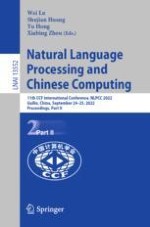This two-volume set of LNAI 13551 and 13552 constitutes the refereed proceedings of the 11th CCF Conference on Natural Language Processing and Chinese Computing, NLPCC 2022, held in Guilin, China, in September 2022.
The 62 full papers, 21 poster papers, and 27 workshop papers presented were carefully reviewed and selected from 327 submissions. They are organized in the following areas: Fundamentals of NLP; Machine Translation and Multilinguality; Machine Learning for NLP; Information Extraction and Knowledge Graph; Summarization and Generation; Question Answering; Dialogue Systems; Social Media and Sentiment Analysis; NLP Applications and Text Mining; and Multimodality and Explainability.
